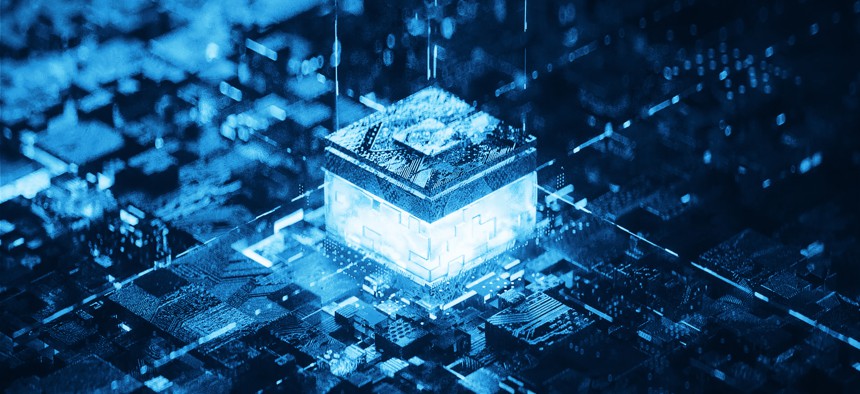Energy continues funding expansion into quantum computing research

Sharamand/Getty Images
As part of the agency’s supercomputing agenda, the Department of Energy selected three winning proposals to receive $24 million for furthering the development of a quantum computing network.
The Department of Energy is continuing its investments into quantum information sciences research and development, with another $24 million allocated toward three projects focused on quantum network research.
Each of these three projects — developed between U.S. national laboratories and universities — intend to contribute to the growing pool of quantum computing research as the global race to develop a scalable, fault-tolerant quantum computer heats up.
“Advances in quantum networking are enabling effective interconnections among multiple quantum devices,” said Ceren Susut, Energy’s acting associate director of science for Advanced Scientific Computing Research. “However, realizing scalable infrastructures for quantum information flows demands advancements in devices, error mitigation techniques and new quantum network architectures and protocols.”
The funding recipients include researchers collaborating between the Argonne National Laboratory and Fermi National Accelerator Laboratory, along with Illinois schools like Northwestern University, the University of Chicago and the University of Illinois-Urbana-Champaign, whose team will focus on codesigning scalable quantum networks.
Fermi National and Argonne are simultaneously working on a separate project incorporating the California Institute of Technology, along with the three Illinois institutions, to develop hyperentanglement-based networking and noise correction techniques within quantum computing systems.
Oak Ridge National Laboratory and its academic partnership with the University of Massachusetts-Amherst, the University of Arizona and Arizona State University are also slated to receive funds to develop architecture and protocols for a performance-integrated scalable quantum internet.
These three projects were selected by peer review following their submission to Energy’s Scientific Enablers of Scalable Quantum Communications program. This program emphasizes research efforts in quantum networking — namely noise and error correction — stack protocols and entangled photon generators — all topics key to developing a fault-tolerant quantum computing infrastructure.
“[Advanced Scientific Computing Research] envisions local quantum networks that connect quantum-enabled research infrastructure, which may scale to become part of a future quantum internet that connects DOE [Office of Science] User Facilities with each other and with remote quantum-enabled research infrastructure, to accelerate scientific discovery,” the program solicitation says.






